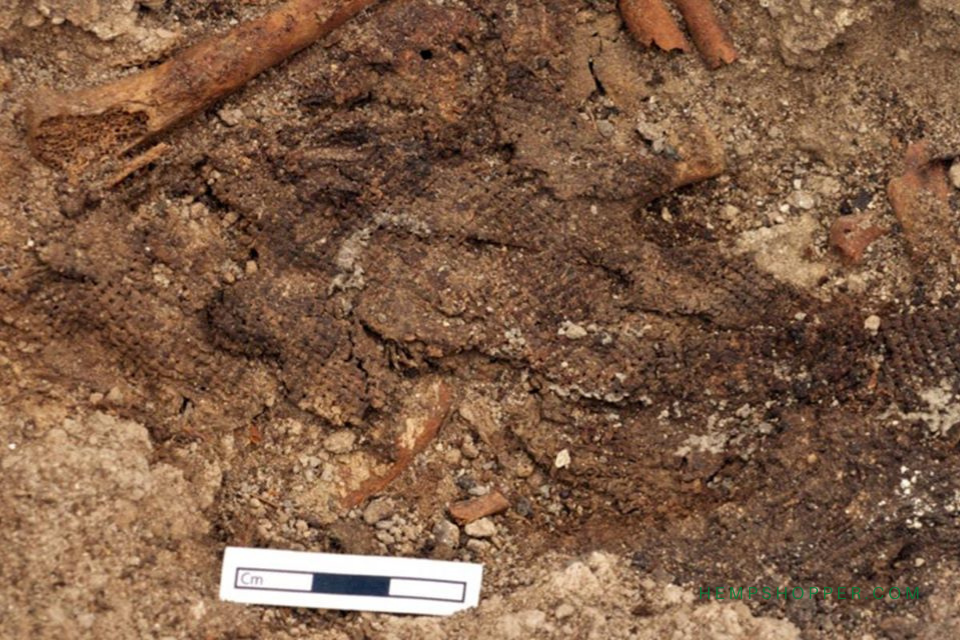8000 – 7000 BCE: The first sign of people using hemp

8000 – 7000 BCE: The first sign of people using hemp
The Columbia History of the World states that the oldest evidence of human industry is a bit of hemp fabric found in Taiwan that dates back to the eighth millennium BCE [1]. However, according to The Great Book of Hemp, a 12,000 years old Neolithic site unearthed at Yuan-Shan included coarse pottery with hempen cord marks covering the surface, and an incised, rod-shaped stone beater used to pound hemp into cord [2].
Scattered among the trash and debris of this prehistoric community were some broken pieces of pottery the sides of which had been decorated by pressing strips of cord into the wet clay before it hardened. Also dispersed among the pottery fragments were some elongated rod-shaped tools, very similar in appearance to those later used to loosen cannabis fibers from their stems [3]. These simple pots, with their patterns of twisted fiber embedded in their sides, suggest that men have been using the marijuana plant in some manner since the dawn of history.
The discovery that twisted strands of fiber were much stronger than individual strands was followed by developments in the arts of spinning and weaving fibers into a fabric – innovations that ended man’s reliance on animal skins for clothing. Here, too, it was hemp fiber that the Chinese chose for their first homespun garments. So important a place did hemp fiber occupy in ancient Chinese culture that the Book of Rites (second century BCE) ordained that out of respect for the dead, mourners should wear clothes made from hemp fabric, a custom followed down to modern times [4].
1. GARRATY, J.A. , GAY,P (1986): The Columbia history of the world. Columbia University Faculty. 2. ROBINSON, R (1995): The great book of hemp: The complete guide to the environmental, commercial, and medicinal uses of the world's most extraordinary plant. Vermont,Park Street Press. 3. CHANG, K.(1968): The archaeology of ancient China. New Haven,Yale University Press. (p-111-112) KUNG,C.T. (1959): Archaeology in China .Toronto,University of Toronto Press. (1:131). 4. LI, H. (1975): The origin and use of cannabis in Eastern Asia: Their linguistic cultural implications in Cannabis and culture. The Hague , ed. V. Rubin (p.54). - Photo : The Terraces of Longsheng in Dazhai, Guanxi, China (Dragon's Backbone - Longji Titian) by Paige Brunt. Research and text © Hempshopper Amsterdam.


 Hempshopper Amsterdam
Hempshopper Amsterdam 






